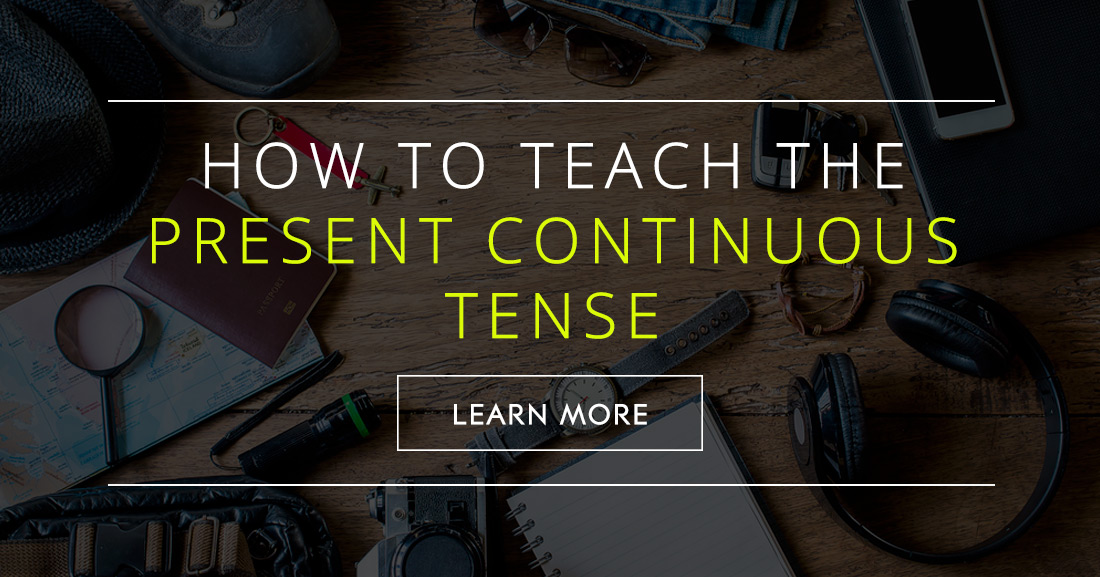When teaching the present continuous tense, one thing usually comes to mind. This tense is taught for the first time to students who are complete beginners, and who have had exposure to a small quantity of verbs and vocabulary, so the examples you may give, or the practice itself, is rather limited. They have, however, already learned the verb to be, which should be of tremendous help in teaching this tense.
How To Proceed
-
1
Introduce the Present Continuous with an action
The present continuous tense is used to describe actions that are taking place at the time of speaking. So, the easiest way to introduce this tense is to carry out actions. Take a pen or pencil and start writing on the board. Say: I am writing.
Sit down and pick up a book. Say: I am reading.
Start walking around the classroom. Say: I am walking.
And so on with as many verbs as you’d like, but use verbs they already know, or introduce new verbs, but only a few at a time.
Go on with other persons. Remember they already know the simple present of the verb to be. Keep walking around the classroom and ask a student to join you. Say: Juan is walking. I am walking. We are walking. Show students that the present continuous is formed with the present of the verb to be + the present participle of the main verb (verb in –ing form).
Show as many actions as necessary, and use illustrations, photos, even videos. Have students tell you what each person or group of people are doing. Try these present continuous cards for a fun game. Here’s a worksheet where students have to write what the people in the photos are doing. And here’s a great one for pair work. Eventually, get them to practice the contracted forms (I'm, he's, we're). -
2
Introduce the Present Continuous – Negative forms
Pick up a book and say: I am reading a book; I’m not reading a newspaper. Give more examples alternating between affirmative and negative statements: Sarah, you’re looking at me. You're not looking at Juan. Juan is listening to me. He’s not listening to Sarah. And so on with all persons, singular and plural. Then have students do the same, always alternating between affirmative and negative statements.
-
3
Introduce the Present Continuous – Interrogative forms
First, model yes or no questions, then, questions with what, where, which, etc…:
- T: Are you listening to me?
- S: Yes!
- T: Ask me!
- S: Are you listening to me?
- T: What are you doing?
- S: I’m looking at you.
- T: Ask Juan!
- S: What are you doing?
Continue with more questions from students. Encourage them to ask different types of questions in different singular and plural persons. If they are unsure as to how to ask a question, model it for them first. -
4
Introduce the Present Continuous – Short answers
Ask yes or no questions and teach students to give short answers:
T: Are you reading a book?
S: Yes, I am./No, I’m not.
Ask students to ask each other yes or no questions in present continuous, and have them practice replying with short answers. -
5
Extended practice and other uses of the Present Continuous
Be sure to provide plenty of exercises for extra practice, above all, because beginners need to not only practice this tense, but also acquire more vocabulary and verbs to do so effectively. At BusyTeacher.org there are dozens of Present Continuous worksheets to choose from. You may also choose to introduce other uses of the present continuous, as in future arrangements. And if they’ve already learned the Present Simple, now’s a good time to contrast both present tenses.
Virgil once said, “Endure the present, and watch for better things” and this definitely applies to beginner ESL students. Although they may be impatient to learn more, and feel frustrated by their lack of vocabulary, they must take things one step at a time, and soon enough they'll be speaking English more confidently. It is your job to guide them on this path.
P.S. If you enjoyed this article, please help spread it by clicking one of those sharing buttons below. And if you are interested in more, you should follow our Facebook page where we share more about creative, non-boring ways to teach English.








